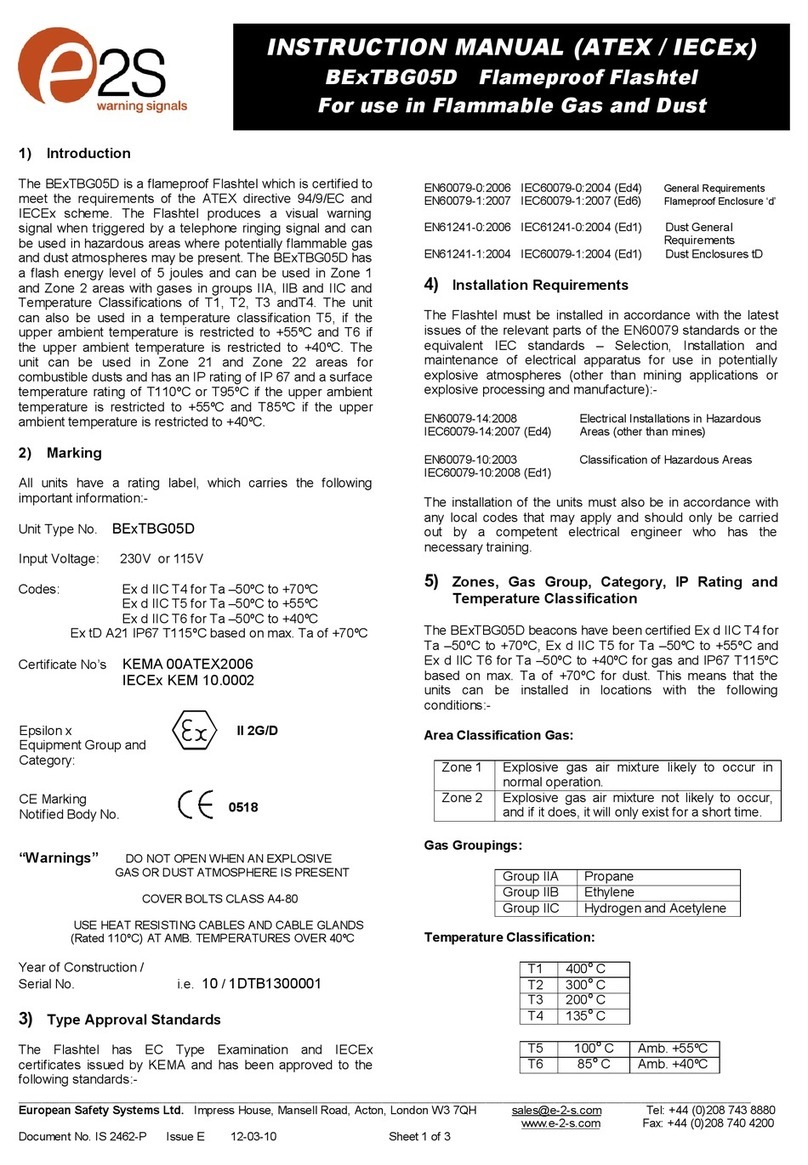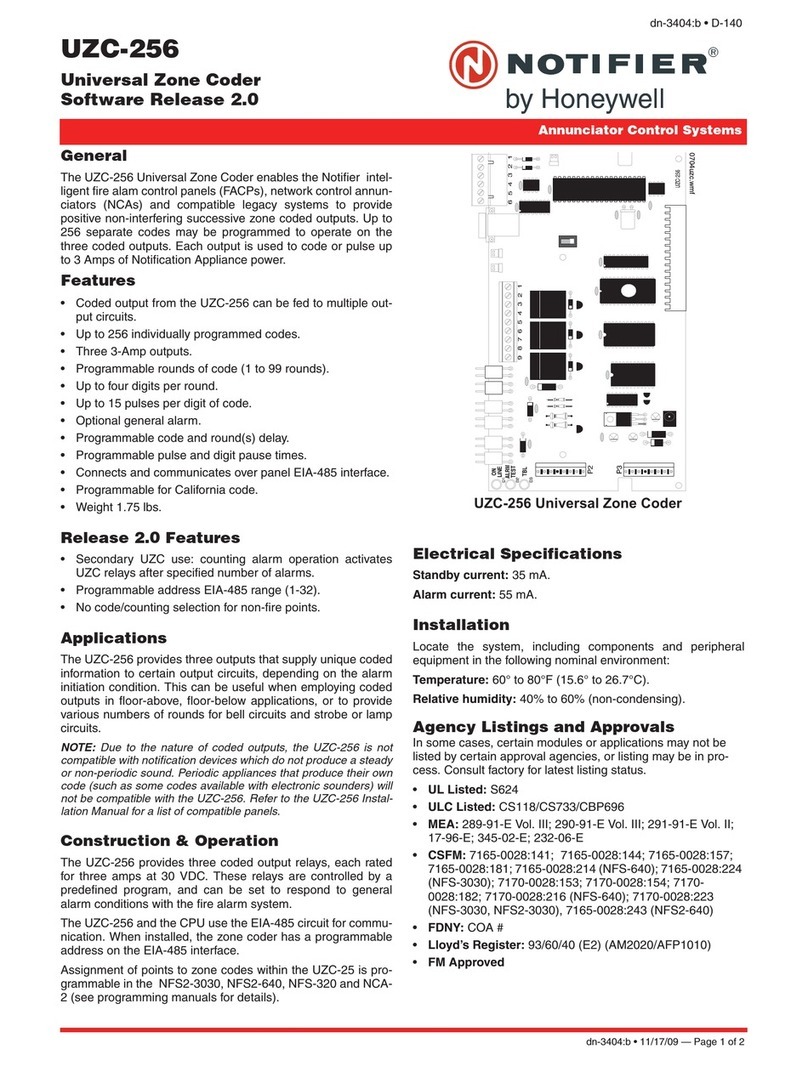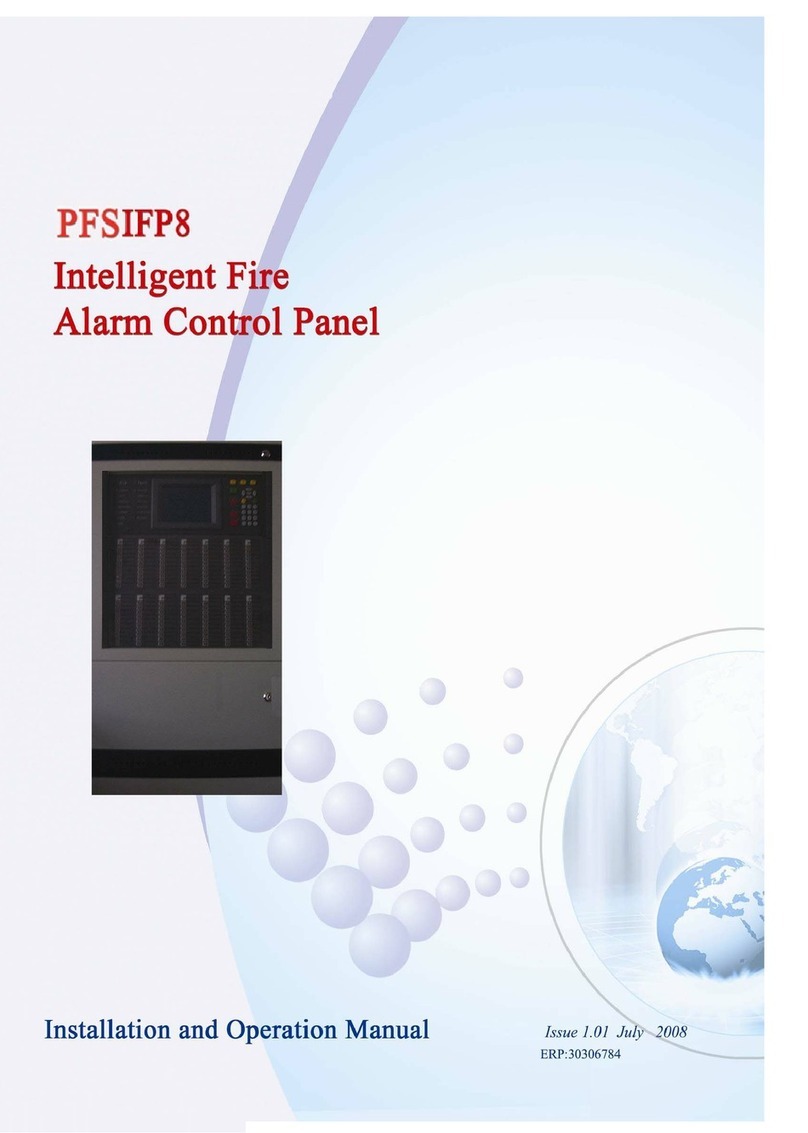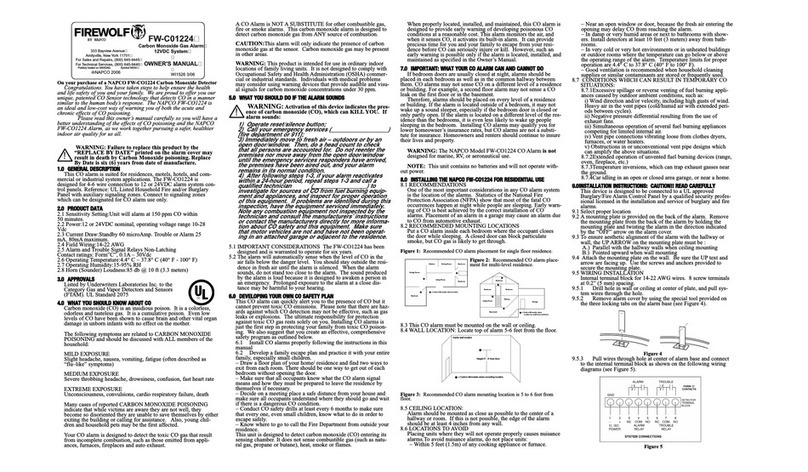
JABLOTRON ALARMS a.s.
Pod Skalkou 4567/33 46601 Jablonec n. Nisou
Czech Republic www.jablotron.com
||
|
The JA-182ST wireless combined smoke and heat detector
The JA-182ST wireless combined smoke and heat detector 1/2 MZZ21603
The JA-182ST is a wireless component of the JABLOTRON
ALARMS security system. It is used to detect fire hazards in the interior
of residential or commercial buildings. It is not designed to be installed
in industrial premises. The JA-182ST detector uses wireless
communication and it is powered with three AA 1.5V alkaline batteries.
The JA-182ST consists of two independent detectors – an optical
smoke detector and a heat detector. The optical smoke detector works
on the principle of scattered light and is very sensitive to large dust
particles which are present in dense smoke. It is less sensitive to
smaller particles generated by the combustion of liquids such as
alcohol. That is why there is also a built-in heat detector which has a
slower reaction but is much better at detecting fire which generates
heat quickly with a small amount of smoke. The microprocessor
performs digital analysis of these values which markedly increases
false alarm immunity.
Detector range
The smoke detector must be installed so that any smoke easily drifts
into the detector, e.g. on the ceiling. It is suitable for residential buildings
but not suitable for free spaces, outdoor environments or interiors with
extremely high ceilings (above 5 m) where fire by-products can
disperse over a large area – the smoke would not reach the detector
position.
The detector must always be placed in the section leading to the exit
of the building (escape route), see Figure 1. If the building has a floor
area greater than 150 m2, installation of an additional detector in some
other suitable place is required, see Fig.2.
1
2
33
4
Fig 1
2
133
4
3
Fig 2
1 - kitchen
2 - living room
3 - bedroom
4 - children’s bedroom
- Basic security
- For more security
1
3
3
3
Fig 3
For large buildings it is recommended to place additional detectors in
rooms where people sleep and in rooms with an increased risk of fire -
see Fig.3.
Installation on level ceilings
Place the detector in the centre of the room if possible. The detector
must not be recessed into the ceiling due to the possible existence of a
cool air layer on the ceiling. Never place the detector in the corner of
the room though (always keep at least a 0.5 m distance from the
corner) see Fig 4.
Installation on sloping ceilings
If the ceiling is not suitable for mounting on a level surface (e.g. a
room under a roof ridge), the detector can be installed as in Fig. 5
0.5m
TOP
Fig 1
0,9 m
Fig 2
centre of the room, best location acceptable location
Walls, partitions, barriers and lattice ceilings
The JA-182ST detector must not be installed closer than 0.5 m
from any wall or partition. A narrow room with a width of less than
1.2m requires the detector(s) to be placed at a distance of at least one
third of the room’s width away. In the case of separating walls
(partitions, warehouse objects) which do not reach the ceiling, the
space is considered to be fully separated if the gap between the
top of the separating wall and the ceiling does not exceed 0.3 m.
A free space of at least 0.5 m is required under the detector. Any
irregularities of the ceiling (e.g. girders) exceeding 5 % of the ceiling
height shall be considered a wall and the above mentioned limitations
shall apply.
Ventilation and air circulation
The detectors must not be installed directly by a fresh air inlet (e.g.
air conditioning vents). In the case of air being supplied through a
perforated ceiling, each detector must be placed so that no perforation hole
occurs within 0.6m of the detector.
Avoid installing the detector in the following locations:
places with poor air circulation (niches, corners, apexes of A-shaped
roofs, etc.)
places exposed to dust, cigarette smoke or steam
places with over-intense air circulation (close to ventilators, heat
sources, air conditioning outlets, etc.)
in kitchens and other cooking places (because steam, smoke or oily
fumes can reduce detector sensitivity).
beside fluorescent lights (electrical interference can cause a false alarm)
in areas with lots of small insects
Please note: Most false alarms are caused by improper
detector location.
See CEN/TS 54-14 standards for detailed installation guidelines.
Installation
The detector should be installed by a trained technician with a valid
certificate issued by an authorized distributor. Abide by the procedures
recommended in the previous paragraphs.
1 2
3
1400- 00- 0000- 00 01
5
4
6
INS
MEM
SMOKE
TEMP
+ - 7
Fig 6: 1– detector cover opening; 2 – detector cover closing; 3 – optical
status signalling; 4 – arrow showing where to insert the detector;
5 – enrollment code; 6 – configuration terminals; 7 – battery holders
1. open the detector cover, by turning it anti-clockwise (1)
2. attach the removed plastic base to the desired place with
screws (not shown above).
3. set the configuration terminals (6) according to the table below:
4. Proceed according to the control panel installation manual.
Basic procedure:
a. There must be a JA-110R radio module installed in the
control panel. Go to the F-Link program, select the required
position in the Devices window and launch the enrollment
mode by clicking on the Enroll option.
b. When you insert all batteries into the detector, the
enrollment code is sent to the system – its sending is
confirmed with a short flash of the LED indicator (3). The
default control panel reaction to the signal of the detector is
Fire.
5. Insert the detector into the plastic base. The detector can be
inserted in the plastic base in one position only. It is marked
with arrows (4) on both plastic parts. Close the detector cover
by turning it clockwise (2).
Note: The detector can also be enrolled into the system by entering
its enrollment code (5) in the F-Link program. (1400-00-0000-
0001).
Detector setting
The detector properties can be set in the Detectors window in
the F-Link program and with the configuration terminals. The
Reaction option in the Detectors window allows you to set the type
of reaction of the system to the activation of the enrolled detector.
The configuration terminals directly on the detector PCB determine
other properties:



















